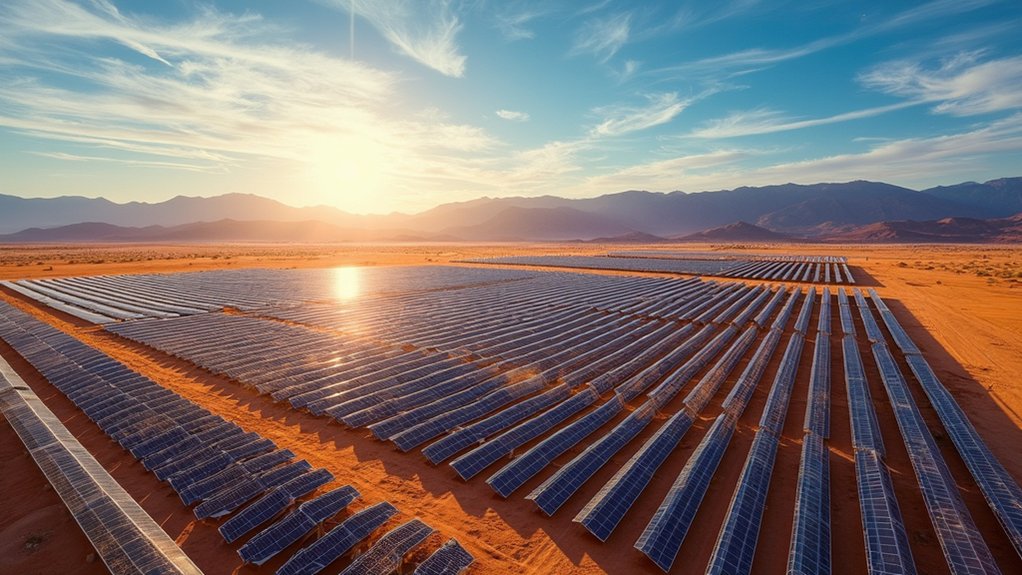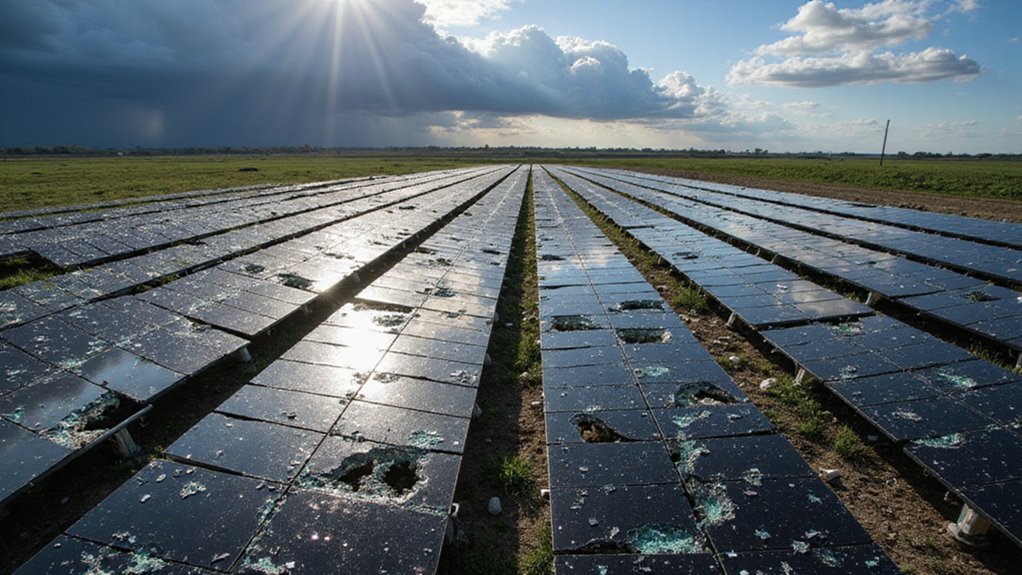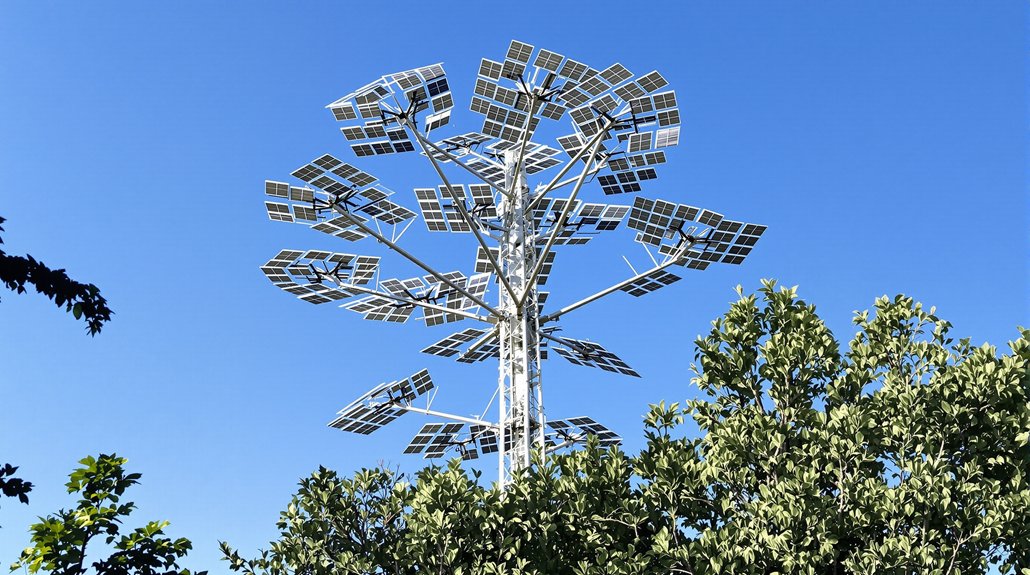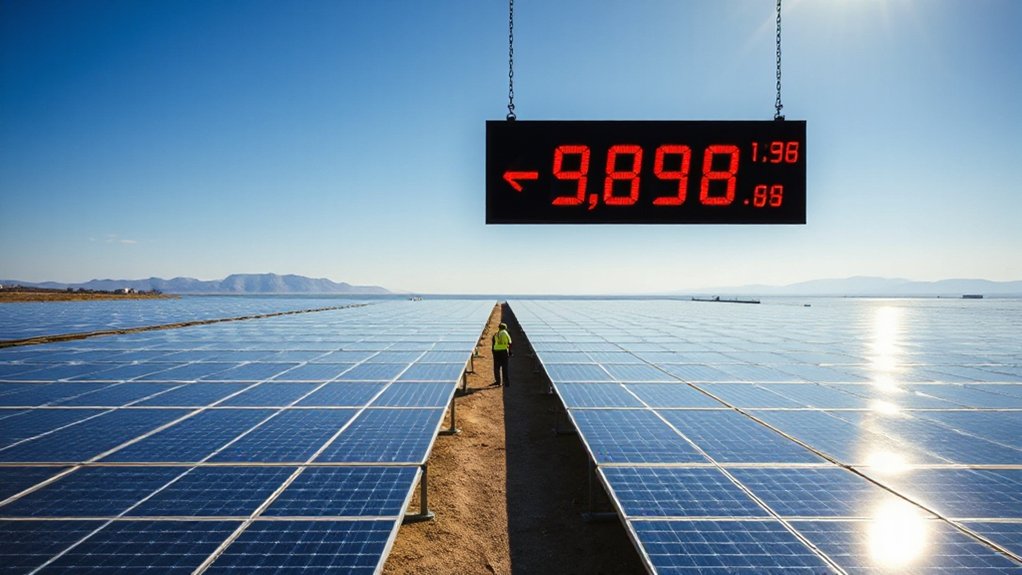The harsh desert sun, once merely a source of blistering heat, has become Nevada’s unexpected goldmine. Ranking 6th nationally for installed solar capacity with 7,982 MW, Nevada has transformed its abundant sunshine into a $12.5 billion industry. Not bad for a state mostly known for gambling and wide-open spaces.
The numbers are pretty staggering. Over 32% of Nevada’s electricity now comes from solar, powering more than 1.2 million homes across the state. That’s a lot of air conditioners running without burning a speck of coal. The industry’s growth trajectory isn’t slowing either—projections show an additional 11,504 MW coming online in the next five years. Yeah, that’s billion with a B.
Nevadans have embraced this solar boom. Nearly 17% of homes sport rooftop panels, ranking the state 4th in per-capita residential solar capacity nationally. It makes financial sense: typical 5 kW systems produce around 8,577 kWh annually, saving homeowners about $105 monthly. Payback periods of 4-10 years? Not too shabby.
Jobs follow the sun too. The state hosts 106 solar companies employing 8,592 workers—growing 42% over the last decade. These aren’t just installation jobs; they span manufacturing, development, and other sectors. Real economic diversification, finally. Nevada’s expansion mirrors the global trend where solar PV capacity increased by 25.6% in 2022 alone.
Even mining companies want in. Nevada Gold Mines completed a 200 MW project that supplies nearly 20% of its electricity needs. Carson City’s more modest 500 kW installation saves taxpayers $50,000 yearly. Smart.
The environmental benefits stack up nicely. Each residential system offsets about 3.27 tons of CO₂ annually. Collectively, renewable sources now generate 43% of Nevada’s electricity, with solar accounting for 71% of that renewable mix. With the average 7 kW system costing roughly $15,631 after tax credit, homeowners can both save money and reduce their carbon footprint. The state’s impressive energy storage target of 1,000 MW by 2030 will further enhance grid reliability and maximize solar power usage.
What changed? Smart policy. The 2017 legislature restored net metering, reigniting residential solar after previous regulatory stumbles threatened to derail progress. Sometimes politicians actually fix things.
Nevada’s solar potential ranks highest in the nation. The state is simply converting what it has in abundance—sunshine and land—into clean energy and cold, hard cash.








